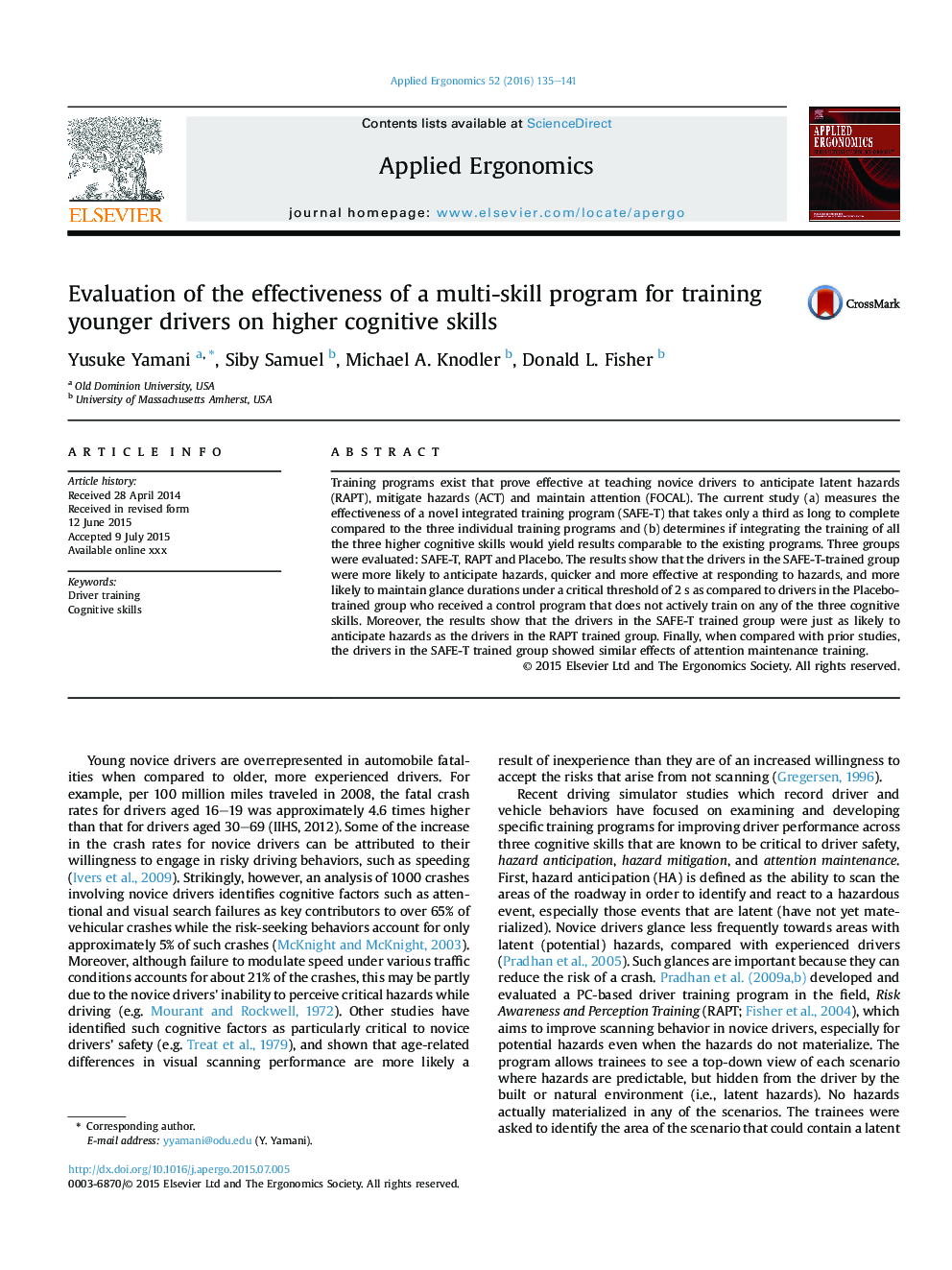| Article ID | Journal | Published Year | Pages | File Type |
|---|---|---|---|---|
| 6947927 | Applied Ergonomics | 2016 | 7 Pages |
Abstract
Training programs exist that prove effective at teaching novice drivers to anticipate latent hazards (RAPT), mitigate hazards (ACT) and maintain attention (FOCAL). The current study (a) measures the effectiveness of a novel integrated training program (SAFE-T) that takes only a third as long to complete compared to the three individual training programs and (b) determines if integrating the training of all the three higher cognitive skills would yield results comparable to the existing programs. Three groups were evaluated: SAFE-T, RAPT and Placebo. The results show that the drivers in the SAFE-T-trained group were more likely to anticipate hazards, quicker and more effective at responding to hazards, and more likely to maintain glance durations under a critical threshold of 2Â s as compared to drivers in the Placebo-trained group who received a control program that does not actively train on any of the three cognitive skills. Moreover, the results show that the drivers in the SAFE-T trained group were just as likely to anticipate hazards as the drivers in the RAPT trained group. Finally, when compared with prior studies, the drivers in the SAFE-T trained group showed similar effects of attention maintenance training.
Keywords
Related Topics
Physical Sciences and Engineering
Computer Science
Human-Computer Interaction
Authors
Yusuke Yamani, Siby Samuel, Michael A. Knodler, Donald L. Fisher,
